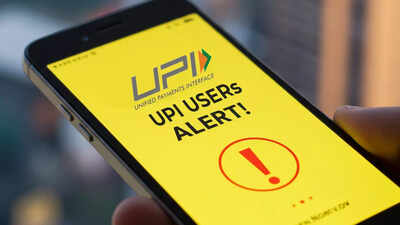UPI users should take note of new mobile number verification rules from April 1, 2025. The NPCI has released fresh guidelines for banks, UPI payment applications, and third-party UPI service providers concerning numeric UPI IDs. These new regulations seek to boost system compatibility, make it more user-friendly, and minimise transaction errors linked to mobile number modifications. All service providers must implement these regulations by March 31, 2025.
Banks and UPI applications must conduct weekly updates of their mobile number records to prevent errors from recycled or modified numbers. Applications must obtain explicit user permission before assigning or updating numeric UPI IDs. Users must actively opt in to use this feature, as the default setting is opt-out. Applications are prohibited from requesting consent during transactions to avoid user confusion.
According to an ET report, the NPCI official statement dated March 3, 2025, says: “The Banks, PSP App shall use the Mobile Number Revocation List/Digital Intelligence Platform (MNRL/DIP) and update their database accordingly at regular intervals, at least on weekly basis. The activity of recycled or the churned mobile numbers reflecting correctly in the bank and PSPTTPAP databases will reduce the chances of errors due to churned mobile numbers.”
Also Read | Are your bank deposits insured if bank fails? Up to Rs 5 lakh deposit insurance scheme explained
These instructions apply to banks, UPI payment applications, and third-party UPI service providers.
Should NPCI’s verification system experience delays, UPI applications may temporarily resolve numeric UPI ID issues internally. However, these instances must be documented and reported to NPCI monthly for oversight purposes.
The DoT regulations specify that mobile numbers, once disconnected, can be reassigned to new users after a 90-day interval. Telecom providers typically deactivate numbers when subscribers show no activity – calls, messages, or data usage – for three consecutive months.
These deactivated numbers are subsequently allocated to different subscribers following the mandatory waiting period. Such reallocated numbers are referred to as recycled or churned numbers.
Also Read | Unified Pension Scheme: Central government employees take note – UPS rules notified; check eligibility, contribution
Applications supporting UPI transactions must now obtain explicit permission before linking or transferring your UPI number. Your bank-verified mobile number serves as your UPI identifier, enabling you to receive funds across different UPI applications.
This new requirement marks a shift from previous practices where explicit consent wasn’t mandatory. Regular database maintenance by PSPs and banks will ensure precise UPI identity mapping, preventing misdirected transactions whilst strengthening security measures.
The deadline for UPI banks and applications to implement these regulations is March 31, 2025.
Starting April 1, 2025, financial institutions and UPI applications must submit monthly reports to NPCI regarding their management of Numeric UPI IDs.
These modifications aim to enhance UPI transaction efficiency, security and user experience by minimising mobile number-related errors and increasing payment transparency.
Also Read | Gratuity eligibility, payout and formula: Leaving job before 5 years? Here’s how you can still get gratuity
Trending
- Gensol promoters banned from market for fund diversion
- Stock market today: Sensex declines 165.3 points to 76,569.59 in early trade; Nifty dips 51.55 points to 23,277
- US top trading partner of India for 4th straight year in FY25; trade gap with china widens to $99.2 bn
- US stocks jump & slip as risks linger
- Nvidia braces for $5.5 billion blow as Trump administration tightens grip on AI chip exports to China
- Goldman Sachs buys HR firm PeopleStrong
- At $437.4 billion, exports of goods top last year’s level
- Tariff tensions: Boeing shares slump in premarket trading after China halts jet deliveries
- Retail inflation dips to nearly 6-yr low of 3.34%
- India leads global market recovery, first in world to rebound from Trump tariff shock



